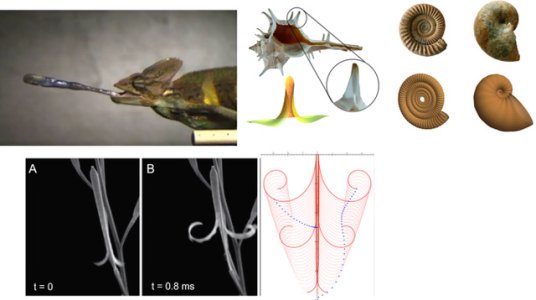Mechanical processes in biology
It has been over 100 years since D'Arcy Thompson's classic tome “On growth and form'', in which he demonstrated the role of physical forces in biological form. The basic principles he espoused have found a new resurgence in recent decades, driven largely by advances in experimental techniques, which have made it ever more clear that mechanical forces play a crucial role at every scale in biology, and in computational power, which enables the impact to be explored quantitatively. In this new era, mathematical modelling has a fundamental part to play, capable of providing a link between experiment and computation, and of extracting mechanistic underpinnings through reducing the complexity inherent in a biological system.
By combining classical constructs of fluid and solid mechanics with biological details such as cellular processes, growth, and tissue anisotropy, and utilising sophisticated tools of applied mathematics, we are exploring a wide range of interesting biological phenomena from a physical and mechanistic point of view. This has included such diverse topics as seashell morphology, wound healing, the mammalian bladder, crypt formation in the digestive tract, the chameleon’s tongue, and seed dispersal in plants.
Case studies:
- Unleashing the mathematics of the chameleon's tongue
- Scientists discover how a common garden weed expels its seeds at record speeds
Key contact: Derek Moulton - @email
References:
- R. Chirat, D. E. Moulton, and A. Goriely. Mechanical basis of morphogenesis and convergent evolution of spiny seashells. PNAS, 110(15):6015–6020, 2013.
- Hofhuis, H. et al., 2016. Morphomechanical innovation drives explosive seed dispersal. Cell, 166(1), pp.222–233.


